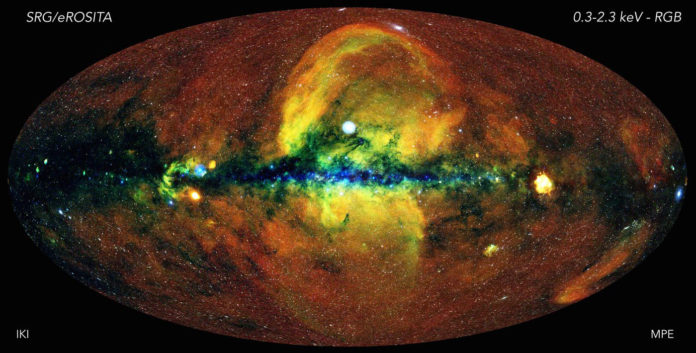The eROSITA telescope onboard SRG has recently captured a stunning view of the entire sky- revealing the nature of the hot universe. The view is about four times deeper than the previous all-sky survey by the ROSAT telescope 30 years ago and has yielded around ten times more sources: nearly as many as have been discovered by all past X-ray telescopes combined.
Over 182 days, the eROSITA X-ray telescope onboard SRG has completed its first full sweep of the sky. This new map of the hot, energetic universe contains more than one million objects, roughly doubling the number of known X-ray sources discovered over the 60-year history of X-ray astronomy.
Peter Predehl, the Principal Investigator of eROSITA at the Max Planck Institute for Extraterrestrial Physics (MPE), said, “This all-sky image completely changes the way we look at the energetic universe. We see such a wealth of detail – the beauty of the images is stunning.”
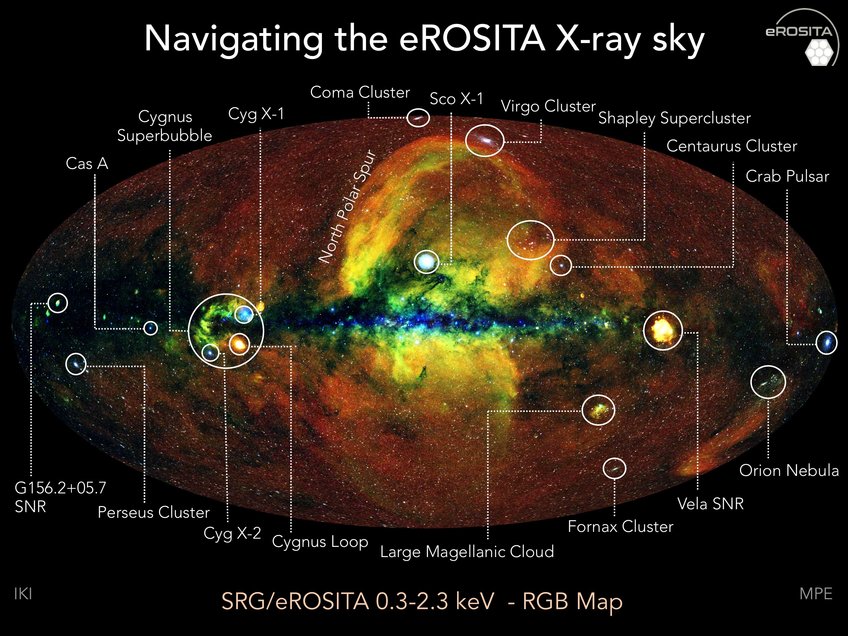
Looking outside the body of our Galaxy, the more significant part of the eROSITA sources are active galactic nuclei, accumulating supermassive black holes at cosmological distances, interspersed with a cluster of galaxies, which show up as extended X-ray haloes shining because of the hot gas confined by their immense concentrations of dark matter.
The all-sky image uncovers in exquisite detail the structure of the hot gas in the Milky Way itself, and the circum-galactic medium, which surrounds it, whose properties are critical to understanding the development history of our Galaxy. The eROSITA X-ray map likewise uncovers stars with strong, magnetically active hot coronae, X-ray binary stars containing neutron stars, black holes or white dwarves, and spectacular supernova remnants in our own and other nearby galaxies, for example, the Magellanic clouds.
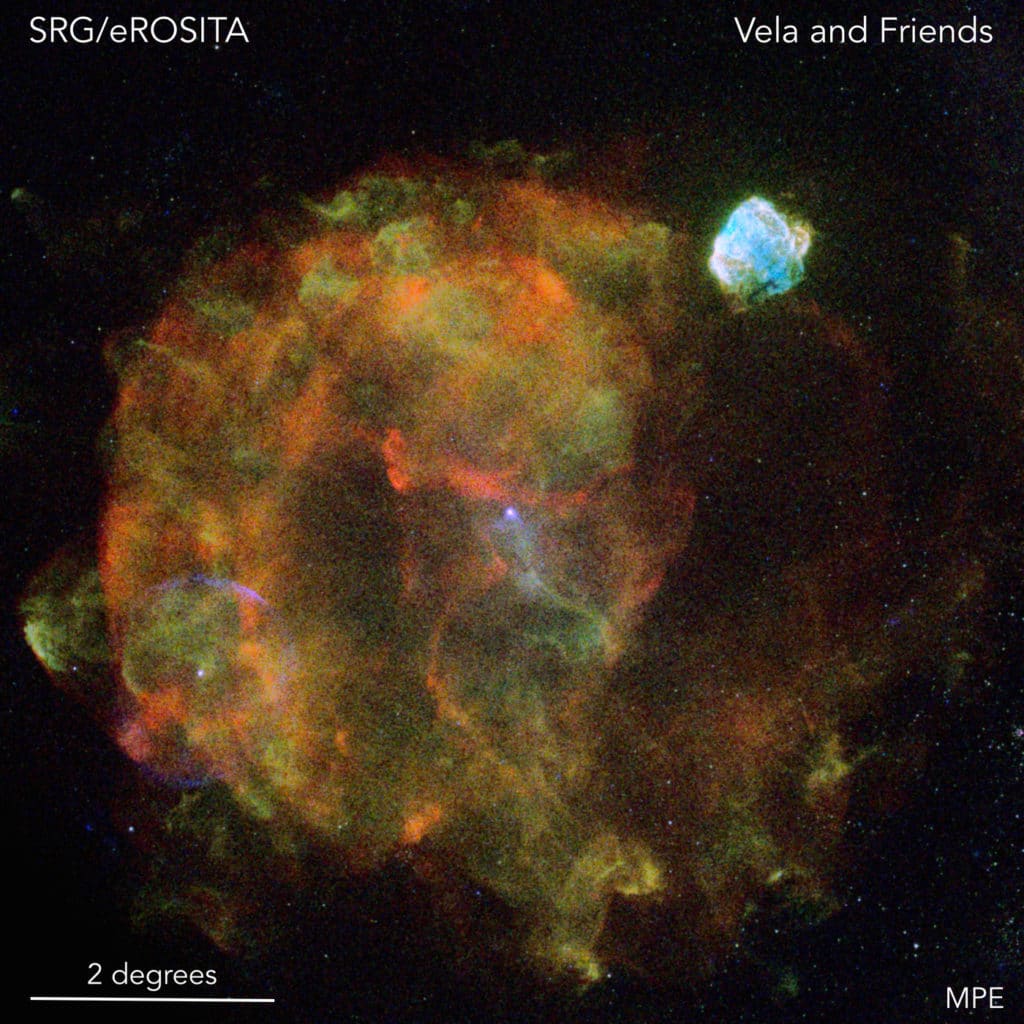
Mara Salvato, the scientist at MPE who leads the effort to combine eROSITA observations with other telescopes across the electromagnetic spectrum, said, “We were all eagerly awaiting the first all-sky map from eROSITA. Large sky areas have already been covered at many other wavelengths, and now we have the X-ray data to match. We need these other surveys to identify the X-ray sources and understand their nature.”
“The survey is also a treasure trove of rare and exotic phenomena, including numerous types of transients and variables, such as flares from compact objects, merging neutron stars, and stars being swallowed by black holes. eROSITA often sees unexpected bursts of X-rays from the sky. We need to alert ground-based telescopes immediately to understand what’s producing them.”
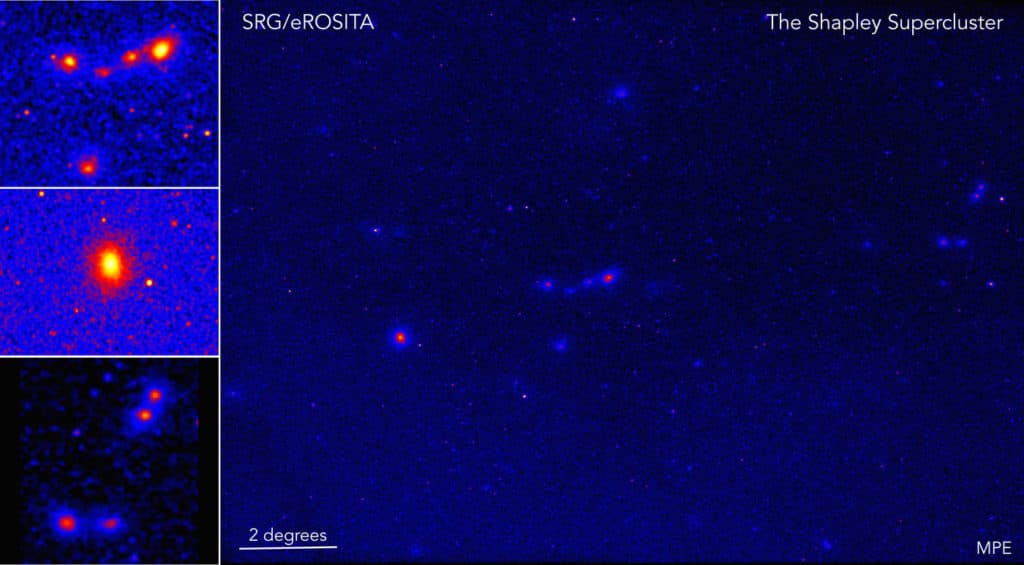
Assembling of the image was indeed a colossal task, and why not, scientists had received and processed almost 165 GB of data collected by eROSITA’s seven cameras.
Miriam Ramos-Ceja, a member of the eROSITA operations team at MPE, said, “We used to usually check and monitor the health of the instrument daily, in cooperation with our colleagues in Moscow who operate the SRG spacecraft. This means we can respond quickly to any anomalies.”
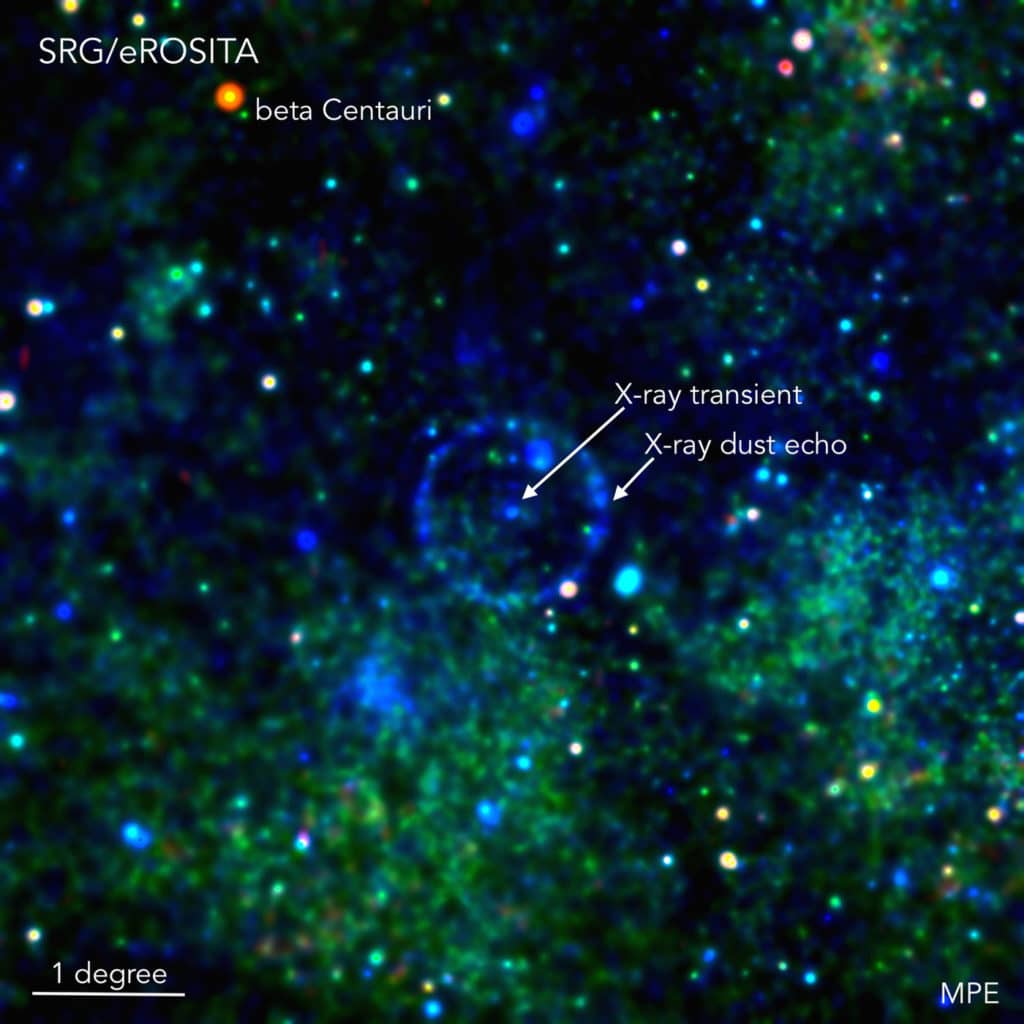
“We’ve been able to react to these immediately to keep the instrument safe while collecting data at ~97% efficiency. It’s amazing to be able to communicate in real-time with an instrument located 1.5 million kilometers away!”
“Data downlink occurs daily. We perform immediate quality checks on the data before it is being processed and analyzed by the teams in Germany and Russia.”
For now, scientists are busy analyzing this first all-sky map. They hope that the images and catalogs are probably helpful in the understanding of cosmology and high-energy astrophysical processes.”
Rashid Sunyaev, the Lead Scientist of the Russian SRG team, said, “Overall, during the next 3.5 years, we plan to get seven maps similar to the one seen in this beautiful image. Their combined sensitivity will be a factor of 5 better and will be used by astrophysicists and cosmologists for decades.”
